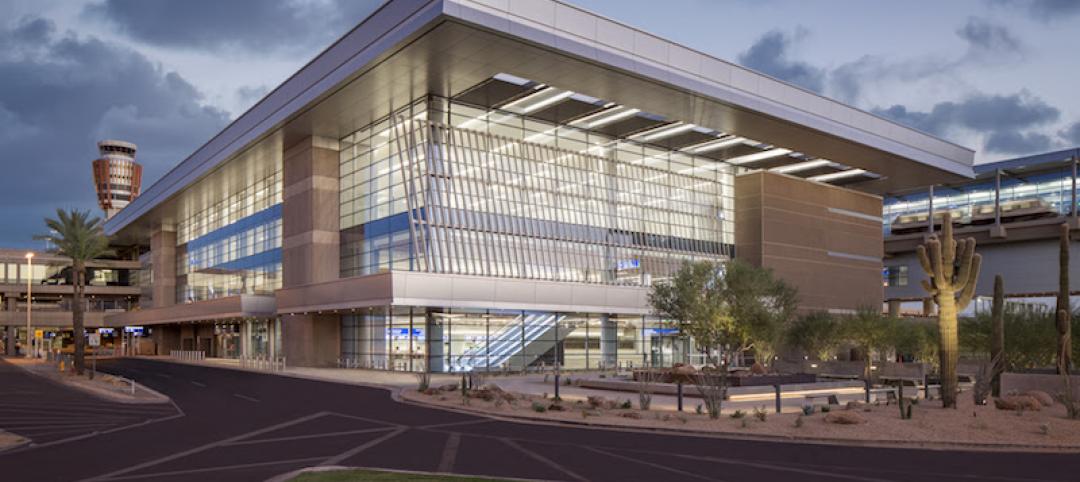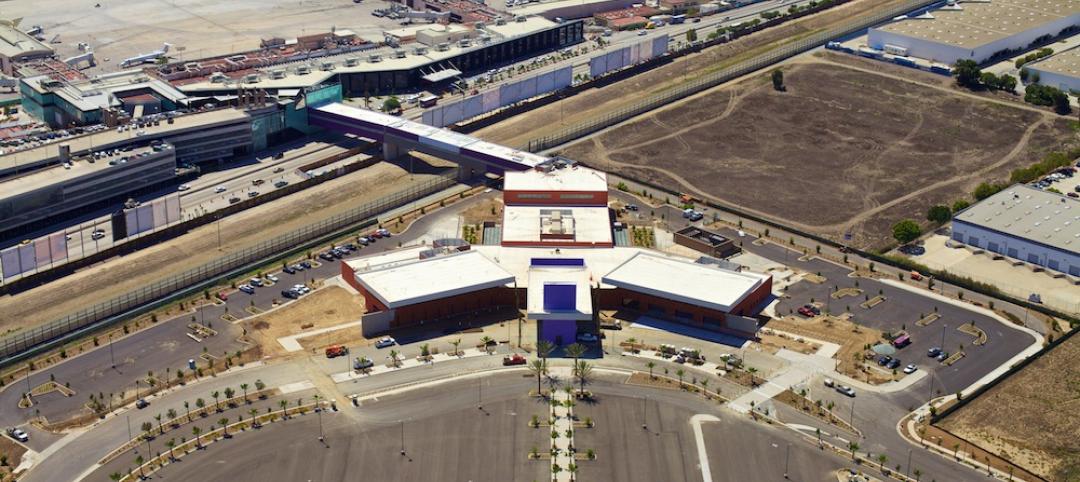According to expert forecasters, multifamily projects, the Panama Canal expansion, and the petroleum industry’s “shale gale” could be saving graces for commercial AEC firms seeking growth opportunities in an economy that’s provided its share of recent disappointments.
In a spring industry roundtable hosted by Reed Construction Data, economists from the American Institute of Architects, the Associated General Contractors of America, and RCD discussed the mixed signals in commercial design and construction, and the seemingly perennial predictions of a breakthrough.
The overall conclusion, according to Bernard Markstein, U.S. Chief Economist for RCD? The economy’s improving and employment is growing, but both ought to be better by now.
Nevertheless, Markstein identifies several positives in the overall picture. “The Federal Reserve has started to taper its activity, without too much impact on interest rates; these remain historically low,” he says. “Lenders are slowly loosening lending standards. We’ve already seen most of the impact of sharp cuts in federal spending, and those should be done for now.”
Multifamily continues to be a particularly bright spot, according to Markstein. Other sectors remain more problematic, with a brutal winter limiting overall activity in many regions.
TOP ARCHITECTURE FIRMS
2013 Architecture Revenue ($)1 Gensler $883,221,1892 Perkins+will 356,360,0003 NBBJ 196,784,0004 Kohn Pedersen Fox Associates 177,715,0005 Callison 160,912,3986 Perkins Eastman 155,000,0007 ZGF Architects 128,101,1368 Populous 111,754,0009 Corgan 95,097,37210 MulvannyG2 Architecture 73,200,000TOP ARCHITECTURE/ENGINEERING FIRMS
2013 A/E Revenue ($)1 Stantec $450,836,5752 HOK 400,000,0003 Skidmore, Owings & Merrill 334,525,3464 HDR 303,000,0005 HKS 255,063,6246 CannonDesign 213,000,0007 RTKL Associates 205,373,0008 SmithGroupJJR 162,973,0009 Hammel, Green and Abrahamson 119,100,00010 DLR Group 110,000,000
Kermit Baker, Chief Economist for the AIA, admits that “nonresidential construction has had a hard time building momentum behind the recovery,” and that the AIA Architecture Billings Index keeps hitting soft spots. Reconstruction, rather than new builds, currently represents a larger-than-usual share of the business, at about 25% of nonresidential construction activity.
Baker predicts that firms doing lodging, office, retail, and manufacturing projects should see decent results this year, with hotel construction especially hot (tracking at 37% growth from February 2013 to February 2014, according to the U.S. Census Bureau). Communication-related construction is another booming area, with growth at more than 50% year over year.
Giants 300 coverage of Architecture Firms brought to you by Sage www.sageglass.com
However, some sectors that represent bread-and-butter business for many top architecture firms are looking grimmer, especially healthcare (off about 4% from February to February) and education (down about 7%). Baker says project financing remains “a chronic problem.”
He believes the long-range outlook is better, however. “New design contracts have been growing, and those stats lead construction. Our member firms are building up more work.”
Ken Simonson, Chief Economist for the AGC of America, reported that his group’s members think the manufacturing, retail/lodging/warehouse, private office, and healthcare sectors should grow this year compared with 2013. Most members are feeling positive overall, he says. “For the first time, two-thirds of our respondents expect the market to upturn either this year or next year,” Simonson says. “In previous years I have been more optimistic than our members. Not this year.”
Tighter government spending on education and infrastructure, consumers’ interest in online buying, and companies’ drive to shrink office space per employee have all restrained commercial AEC growth, according to Simonson. But there are positive trends, as well. In addition to acknowledging the continued strength of the multifamily sector, he says big infrastructure projects provide ample opportunities for AEC firms positioned to take advantage of them.
In particular, Simonson points to massive development related to the so-called “shale gale”: exploitation of America’s petroleum reserves through advanced extraction technologies (notably, fracking). The employment is drawing large numbers of workers to areas that have previously been sparsely populated. Primary “shale gale” zones, or “plays,” include the Bakken (North Dakota/Montana/Saskatchewan), the Niobrara (Kansas/
Wyoming), the Permian (Texas/New Mexico), the Eagle Ford (Texas), the Haynesville (Texas/Louisiana), and the Marcellus (West Virginia/Pennsylvania/New York).
Firms that do large infrastructure projects related to roads, site prep, piping, rail lines, and drilling obviously will benefit, but there’s also an urgent need for housing (typically, modular dorms and extended-stay hotels), recreational facilities, and food service. Nearby existing towns also benefit, not only in terms of hotel, apartment, and restaurant construction but also retail, healthcare, education, and government projects. The burgeoning industry entails environmental controversy, turbulent politics, and an uncertain future, but for now, building is proceeding at a rapid clip.
Simonson also points to upcoming development in U.S. port cities on both coasts and the Gulf of Mexico linked to expansion of the Panama Canal, which is set to be completed next year. Again, in addition to big infrastructure, related facilities will be needed: warehouses, terminals, equipment garages, and even data centers. Incoming workers may also need new housing and services facilities. Commercial AEC firms with the right capabilities could reap big gains.
Read BD+C's full 2014 Giants 300 Report
Related Stories
Airports | Dec 6, 2016
Phoenix Sky Harbor International Airport creates a destination inside Terminal 3
DWL Architects, SmithGroupJJR, and Corgan design passenger experience that connects to the surrounding city and Sonoran desert landscape.
Airports | Nov 1, 2016
FAA forecasts a modest dip in spending for airports over next five years
Latest report based on surveys of 3,340 existing and proposed public-use airports.
Airports | Aug 31, 2016
Aircraft manufacturing facility innovation from The Austin Company
Austin’s many innovations contributed to the success of our clients by enabling them to operate in more efficient environments, optimize the flexibility of their operations, and meet aggressive schedules.
| Jul 29, 2016
AIRPORT FACILITIES GIANTS: Airports binge on construction during busy year for travel
Terminal construction will grow by nearly $1 billion this year, and it will keep increasing. Airports are expanding and modernizing their facilities to keep passengers moving.
Airports | Jun 1, 2016
LaGuardia Airport’s massive redevelopment begins construction
The development consortium has secured financing for the $4 billion project, and signed an operating lease through 2050.
Airports | Apr 6, 2016
HOK leads joint venture to expand and modernize Hartsfield-Jackson Atlanta International Airport’s domestic passenger terminal
The domestic passenger terminal is just the tip of the spear, as the world’s most traveled airport is about to undergo 20 years and $6 billion worth of changes.
Giants 400 | Jan 29, 2016
AIRPORT TERMINAL GIANTS: KPF, Jacobs, Hensel Phelps among top airport sector AEC firms
BD+C's rankings of the nation's largest airport sector design and construction firms, as reported in the 2015 Giants 300 Report
Metals | Jan 19, 2016
6 ways to use metal screens and mesh for best effect
From airy façades to wire mesh ceilings to screening walls, these projects show off the design possibilities with metal.
| Jan 14, 2016
How to succeed with EIFS: exterior insulation and finish systems
This AIA CES Discovery course discusses the six elements of an EIFS wall assembly; common EIFS failures and how to prevent them; and EIFS and sustainability.
Airports | Dec 13, 2015
Skybridge connects a terminal and airport on each side of the U.S.-Mexico border
Cross Border Xpress is the first phase of a larger development that will include hotels and offices.

















